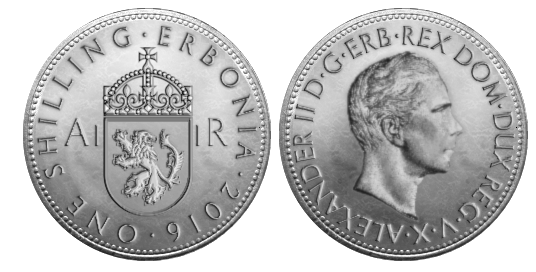Pound marten
| Pound marten | |
|---|---|
| Pound marten | |
 A typical silver coin with a denomination of one shilling, showing the reverse and obverse. | |
| ISO 4217 | |
| Code | GNP |
| Denominations | |
| Subunit | |
| 1⁄20 | Shilling |
| 1⁄12 | Penny |
| 1⁄4 | Farthing |
| 1⁄2 | Octave |
| Symbol | £ |
| Shilling | / or ∫ |
| Penny | d |
| Demographics | |
| User(s) | |
The pound marten (symbol: £) is the national currency of Great Nortend. It is subdivided into 20 shillings (symbol: / or ∫) and 240 pennies (plural: pence; symbol: d). The issuance of the currency is strictly controlled by His Majesty's Treasury, in conjunction with the King's Bank of Cadell.
The specific epithet marten distinguishes the pound marten from other currencies either historically or presently named the pound. It derives from the martlet, a heraldic symbol, used by the House of Anthord which is depicted on reverse of all Erbonian coins owing to their content of marten silver. Marten silver is a highly restricted alloy of silver used specifically for coinage purposes, being made up of 11 parts silver with 1 part copper.
Coins
Coins have traditionally been minted by a number of private moneyers, working under charter from the King. During the 19th century, the main coins in circulation were 1/8d, 1/4d, 1/2d, 1d, 3d, 6d and 12d. By 1942, the octave had stopped mintage, and the florin of two shillings and half-crown of two shillings sixpence put into general circulation.
Nearly all coins ever minted in denominations of the pound marten are still legal tender and most still circulate through the economy. Extremely worn coins are taken out of circulation and melted down to create new coins. There are approximately £2,000 million coins in circulation.
